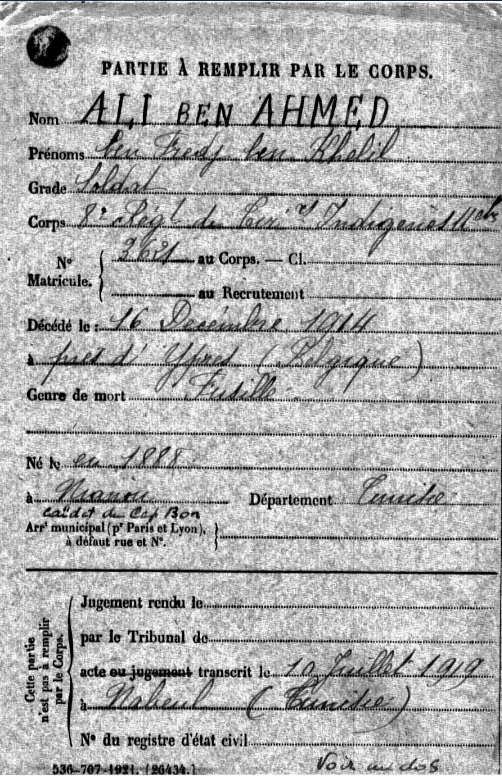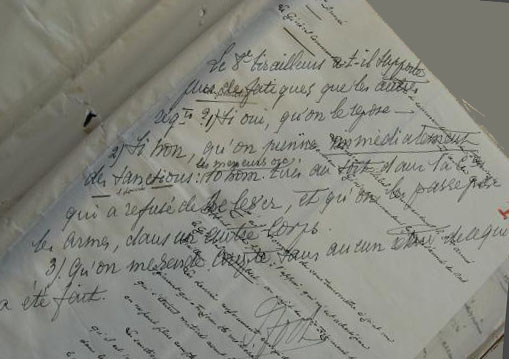On 16th December 1914, ten Tunisian soldiers were chosen at random by the drawing of lots and executed. This was supposed to teach a lesson to their compatriots that they should advance promptly when ordered to do so by their French officers. These men have no known grave, no memorial to their memory. Only one has a definitive record held by the French Defense Ministry.

This man was charged with no specific crime. He was given a piece of paper, and when he turned it over, it had a mark on it while those of his fellows were blank. Then he was paraded around with a sign around his neck, lined up and shot dead.
The offence committed by these men, brought a short time ago from Africa and thrust into the liquid mud ditches of December in Flanders, was a failure to advance promptly against the Caterpillar position, then in German hands. They were executed ‘in Verbrandenmolen’, close behind the front lines which suggests this took place at the rear of The Dump, practically the only place in Verbrandenmolen that was not under direct enemy observation. During the winter of 1914-15, The Dump gained the name amongst French units of ‘Butte des Tirailleurs‘. The unit of the condemned was 15th Company, 8th Regiment de Tirailleurs. ‘La Butte‘ carries a double meaning: a small hill, or the bullet stop behind a target.
The idea of selecting one in ten of the men and shooting them in front of the others came directly from the pen of then General Ferdinand Foch. To that, his generals added an embellishment, that the condemned men should be paraded in the front line with a placard around their necks reading “Coward” in French and Arabic. Here is the death sentence in Foch’s handwriting:-

Have the 8e Tirailleurs endured more exhaustion then the other regiments?
1. If yes, they are to be rested.
2. If no, immediate sanctions are to be taken: the ringleaders or 10 men drawn by lot of the company which has refused to advance are to be shot by firing squad, by a different corps.
3. I am to be reported to without delay as to what has been done.
Foch
For all documents pertaining to this sad affair, see Palingbeek 1915
, appendix p.132